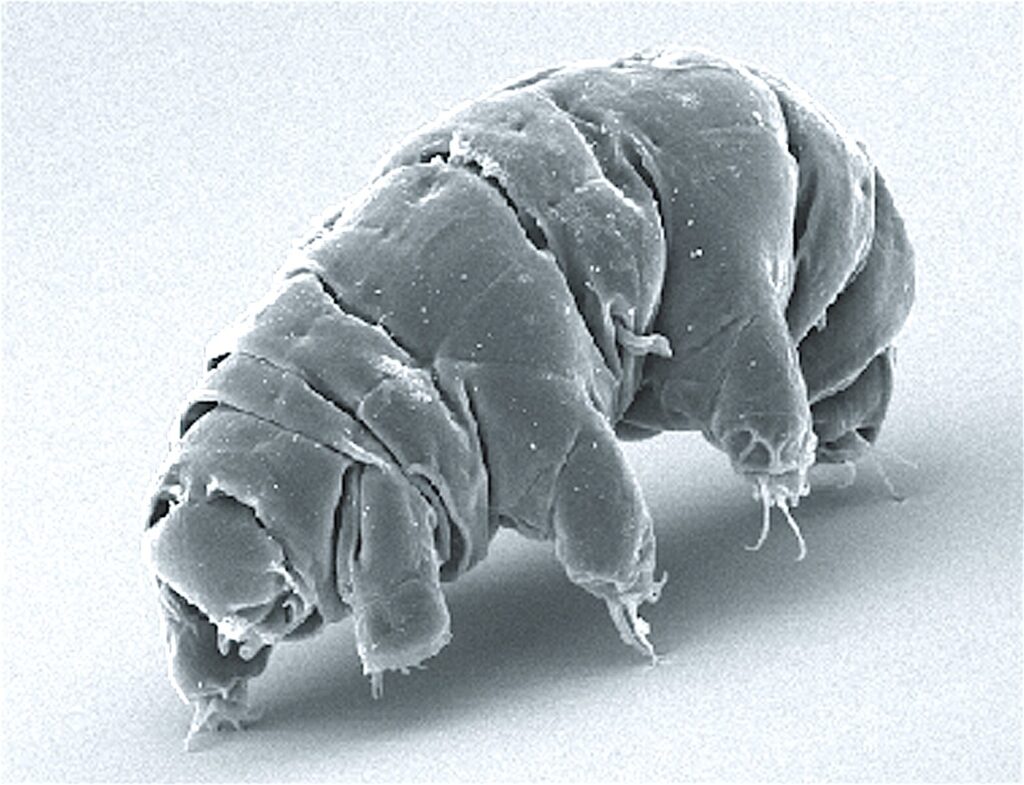
A newly discovered protein from Earth’s most resilient creature, the tardigrade, is paving the way for groundbreaking therapies in cancer and cardiovascular disease. These microscopic organisms, often referred to as water bears or moss piglets, can withstand extreme conditions, including boiling heat, freezing cold, and crushing pressure. Remarkably, tardigrades are the only known animals to survive the harsh environment of outer space and can endure radiation levels up to 2,000 times higher than what human cells can tolerate. This resilience has long intrigued scientists, leading to the discovery of a unique protein that could revolutionize human health.
In 2016, researchers identified a gene in tardigrades that produces a protein unlike any other known in nature, dubbed damage suppressor or Dsup. This protein, when introduced into human cells, increases their resistance to radiation by protecting DNA from damage. The potential applications of this discovery are vast, with researchers around the globe striving to understand the mechanisms behind Dsup’s protective capabilities.
Unraveling the Mystery of Dsup
Scientists have proposed several theories to explain Dsup’s remarkable ability to protect DNA from radiation, though no single explanation has achieved consensus. Recent research has shown that Dsup interacts closely with DNA, binding along its entire length and causing a slight unwinding of the strands. This gentle loosening may reduce DNA’s vulnerability to radiation damage.
Some experts suggest that Dsup acts as a shield, physically blocking radiation from reaching DNA, while others believe it enhances the cell’s repair mechanisms. It’s possible that Dsup employs multiple strategies to protect against various types of radiation and the toxic byproducts they generate.
“Understanding Dsup could one day help people better protect their own cells—bringing a bit of the tardigrade’s extraordinary resilience to human health.”
Potential Medical Applications
The discovery of Dsup has sparked interest in its potential medical applications, particularly in diseases where DNA damage is a key factor. Nearly all cancers involve DNA damage, and researchers are exploring whether Dsup or treatments inspired by it could prevent cells from becoming cancerous. Additionally, Dsup might protect healthy tissue during cancer treatments like radiation or chemotherapy, which often harm healthy cells while targeting cancerous ones.
Dsup’s potential extends beyond cancer treatment. During heart attacks or strokes, tissues experience oxidative stress, leading to DNA damage. If Dsup can mitigate this damage, it could improve outcomes for patients with cardiovascular diseases. Early animal studies have shown promising results, with mammals producing Dsup experiencing reduced DNA damage when exposed to high radiation levels.
Beyond Medicine: Agriculture, Space, and Data Storage
Dsup’s applications are not limited to medicine. In agriculture, researchers have engineered rice and tobacco plants to produce Dsup, making them more resistant to radiation and potentially reducing crop damage. In space exploration, Dsup could help astronauts withstand cosmic radiation, a significant barrier to long-term missions.
In a futuristic twist, scientists are investigating the use of tardigrades for ultrastable data storage. Digital media, vulnerable to environmental damage, could be converted into DNA sequences and integrated into the tardigrade genome. Dsup would then protect the data from extreme conditions.
The Road Ahead for Dsup Research
Since its discovery nearly a decade ago, Dsup has captured the scientific community’s imagination with its potential to drive technological advancements. However, significant research is still needed to fully understand how this mysterious protein functions in living organisms. Numerous scientific groups worldwide are dedicated to unraveling the unique properties of Dsup.
The story of Dsup highlights the potential for scientific breakthroughs inspired by nature’s most resilient creatures. By studying the molecular mysteries of tardigrades, researchers are developing innovative tools to combat human disease and advance biotechnology, offering a glimpse into a future where human resilience could be significantly enhanced.






